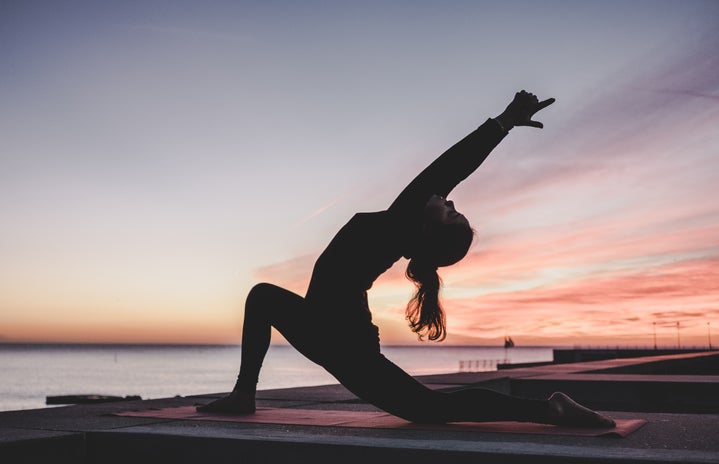By Elizabeth Chokler
Half the population menstruates, and most use one or both of the conventional menstrual hygiene products to manage their periods: disposable pads and tampons. Since it’s such a regular part of our routine, it’s easy to overlook the environmental costs of these common items.
Disposable products and their packaging all contain harmful plastic, and the products themselves contain chemically treated cotton. Cotton requires a ton of water to grow, plus non-organic cotton crops use pesticides and insecticides in its farming. In the production of pads, pantyliners and tampons, cotton is treated with chemicals such as dioxin and chlorine, which pollute groundwater and air once the products end up in landfills. Not to mention all the resources used in the manufacturing and distribution processes of the products!
Graphic by Elizabeth Chokler.
On average, people who have periods menstruate for three to seven days every month for about 40 years. If changed four to five times a day, that’s an average of about 11,000 pads and/or tampons per individual over the course of a lifetime, resulting in about 125 to 150 kg (275 to 330 lbs) of waste. Multiply that by the number of menstruating people and you can begin to see the scope of the problem.
The good news is, there are alternative products available to manage your period without generating so much harmful waste.
1.The Menstrual Cup
The menstrual cup is a soft, silicone cup that you insert kind of like a tampon that sits there and collects blood. It can contain up to three times more blood than a disposable pad or tampon, and can stay in your body for 12 hours (!!) before needing to be rinsed out and put back, which means you can insert it in the morning and forget about it all day long! If properly cleaned and maintained, it can last you for 10 years, saving you around 2,400 tampons or 3,000 pads.
2. Reusable Pads
If you’re more comfortable with pads, you could consider buying a set of reusable cloth pads. They’re easy to wash, the wings have snap buttons to stay on your underwear and they can absorb at least the same amount of blood as disposable pads, depending on their size. Cloth pads come in all sizes and absorbancies, from pantyliner to ultra overnight, so you can choose what you need for your cycle. Since you still have to change them a few times a day, a set of six or more should last you a cycle, depending on your wash schedule, and since they can last for a number of years—specific amount of time also depending on frequency of wash and use—they will save you very many disposable pads.
3. Period Underwear
Finally, there’s period underwear. Probably the most comfortable option of the three, it’s thin like regular underwear and can absorb up to two tampons worth of blood, depending on the style. They’re also easy to wash. You may want to buy 5 or so pairs of varying styles to keep you covered for the duration of your period, but since they’re on the expensive side you may want to accumulate them gradually while using a different method to manage your period in the meantime. They should last you a few years (depending on frequency of use and wear, like the cloth pads), once again saving many disposable menstrual products.
By choosing to switch over to a menstrual cup, reusable cloth pads or period underwear, you can make a difference that helps both the environment and your wallet, and you can be one step closer to living a zero-waste life.



